SUMMARY
VENOM: Dangerous
PREVALENCE: Common
ACTIVE PERIOD: Active day and night
KEY ID FEATURES: Tan to green with dark jagged saddle markings, large head and stout body
BEHAVIOR: Ambush and active hunting predator, acquatic hunter of fish and other animals, agressive defensive displays, reputation for agressision
SIZE: Medium 60-90cm
IUCN: LC - Least Concerned
OTHER: Several distinct species, venom toxicity varies by individual and location
QUICK ASSESSMENT 0-10
VENOM REVIEW*
COMPOSITION: Procoagulants (Fibrinogenases), Anticoagulants (probably not present), Haemorrhagins (possibly present), Nephrotoxins (likely not present), Cardiotoxins (likely not present), Necrotoxins (likely not present).
LOCAL EFFECTS: Serious envenomation possible, potentially lethal though unlikely, local pain, swelling, bruising & blistering, local necrosis possible.
GENERAL EFFECTS: Nausea, headache vomiting, general pain, dizziness, diarrhoea, collapse and/or convulsions, possible shock.
TREATMENT: Antivenom for related species used in serious envenomations, treatment generally supportive & symptomatic.
*INFORMATION ON VENOM OBTAINED FROM WWW.TOXINOLOGY.COM
GALLERY
IMPORTANT: Many snakes have significant variance in coloration and pattern even within the same species. There can also be extreme differences in appearance from juveniles to adults so it is important to never assume you have properly identified a snake.

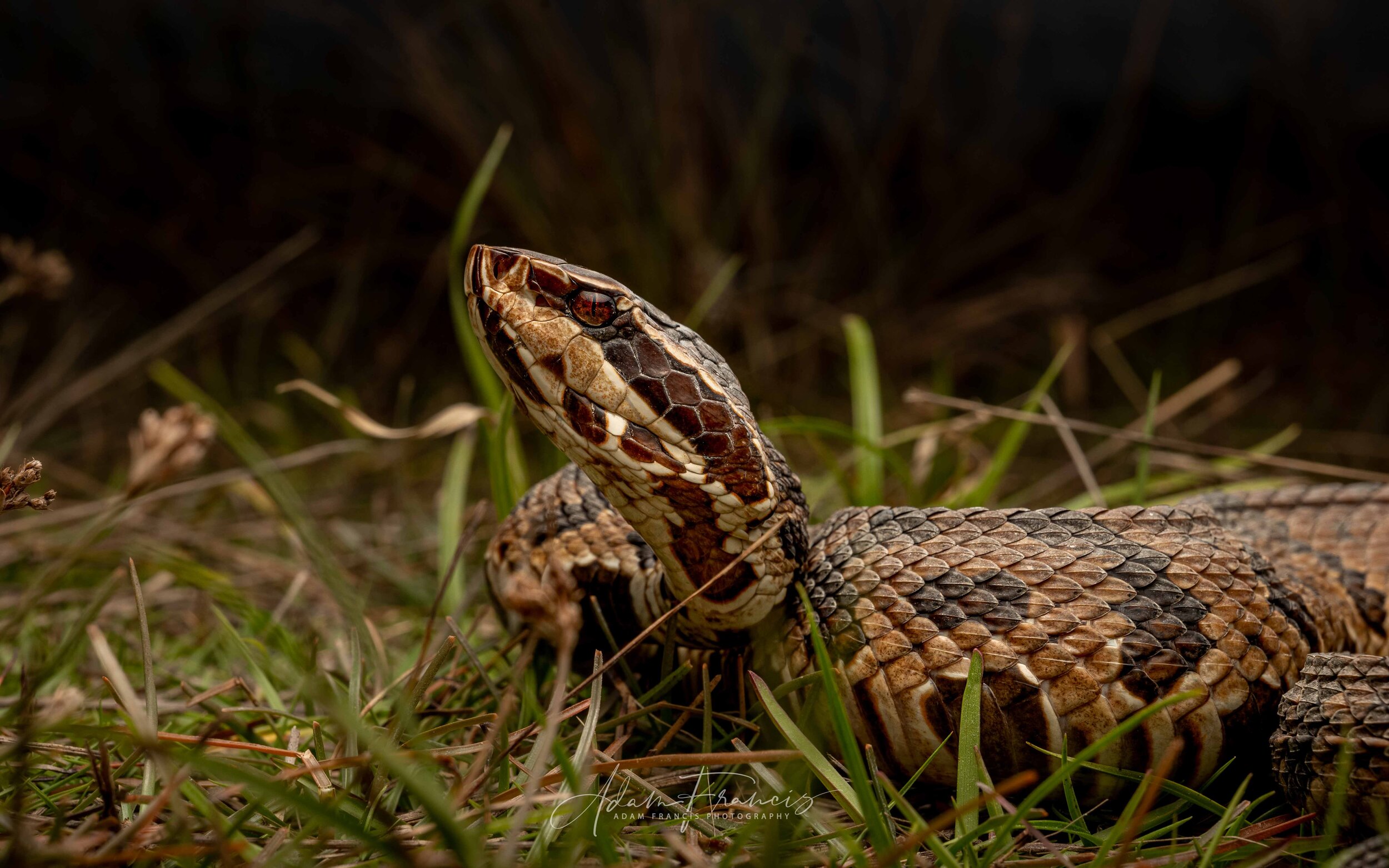
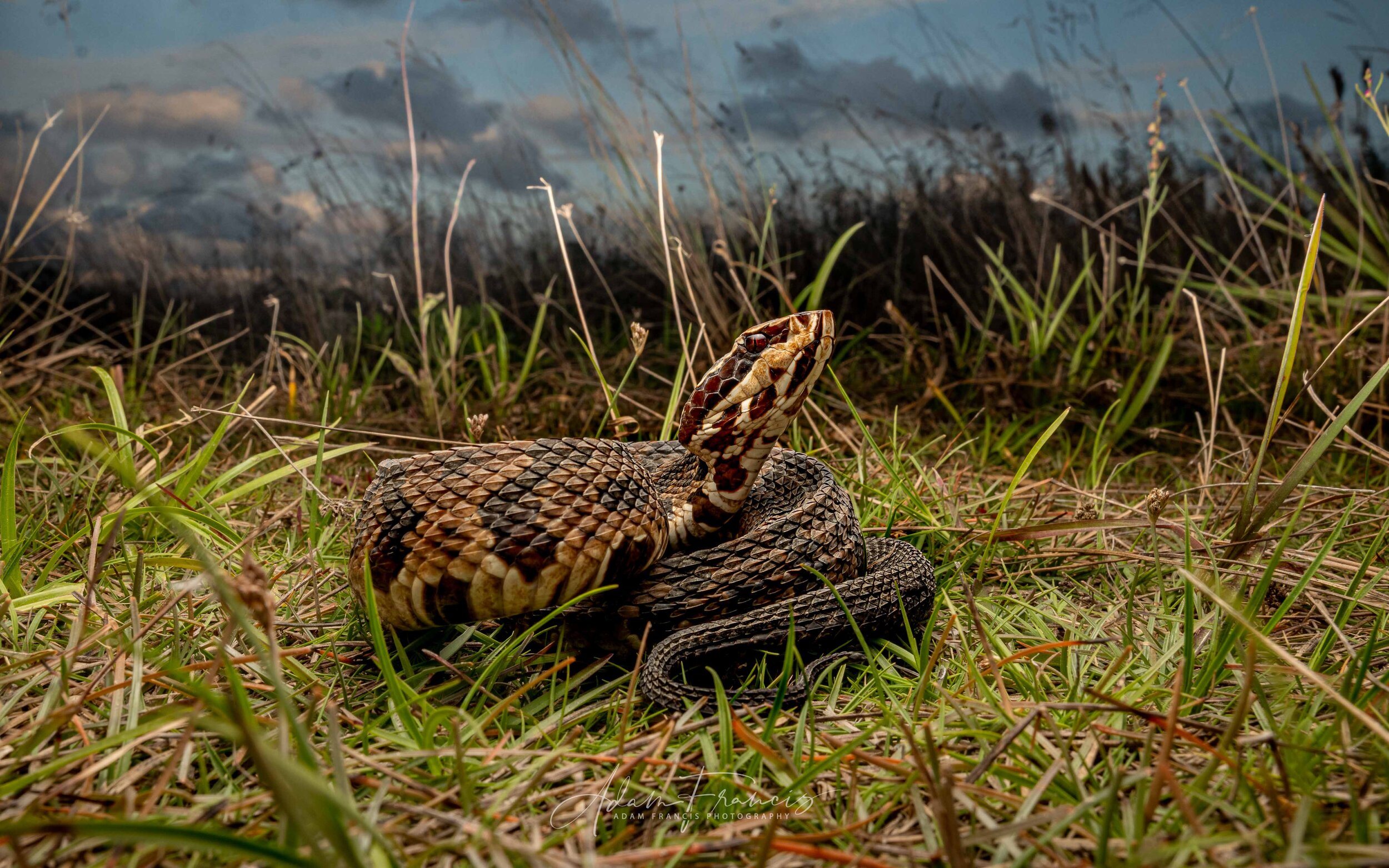
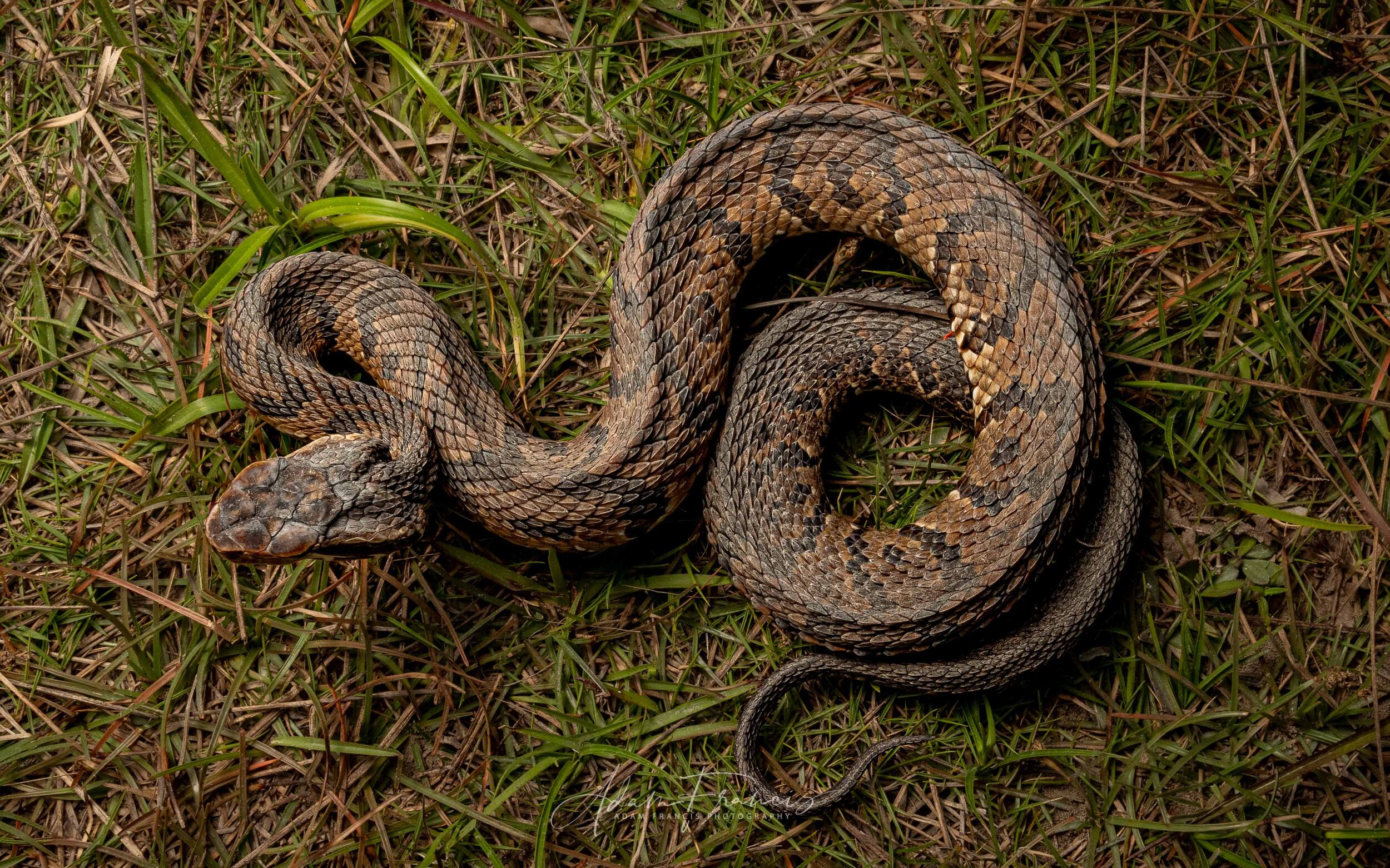
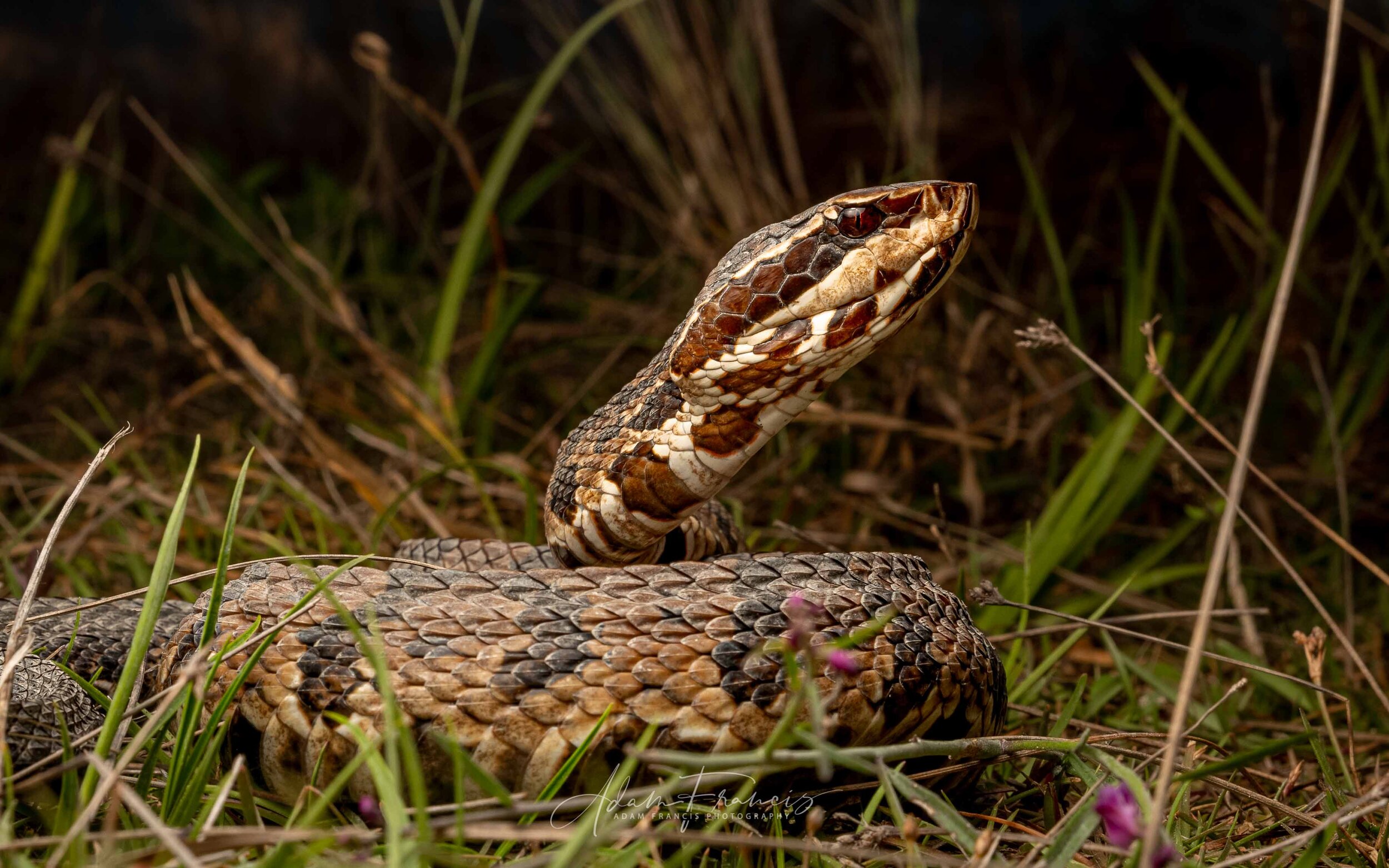
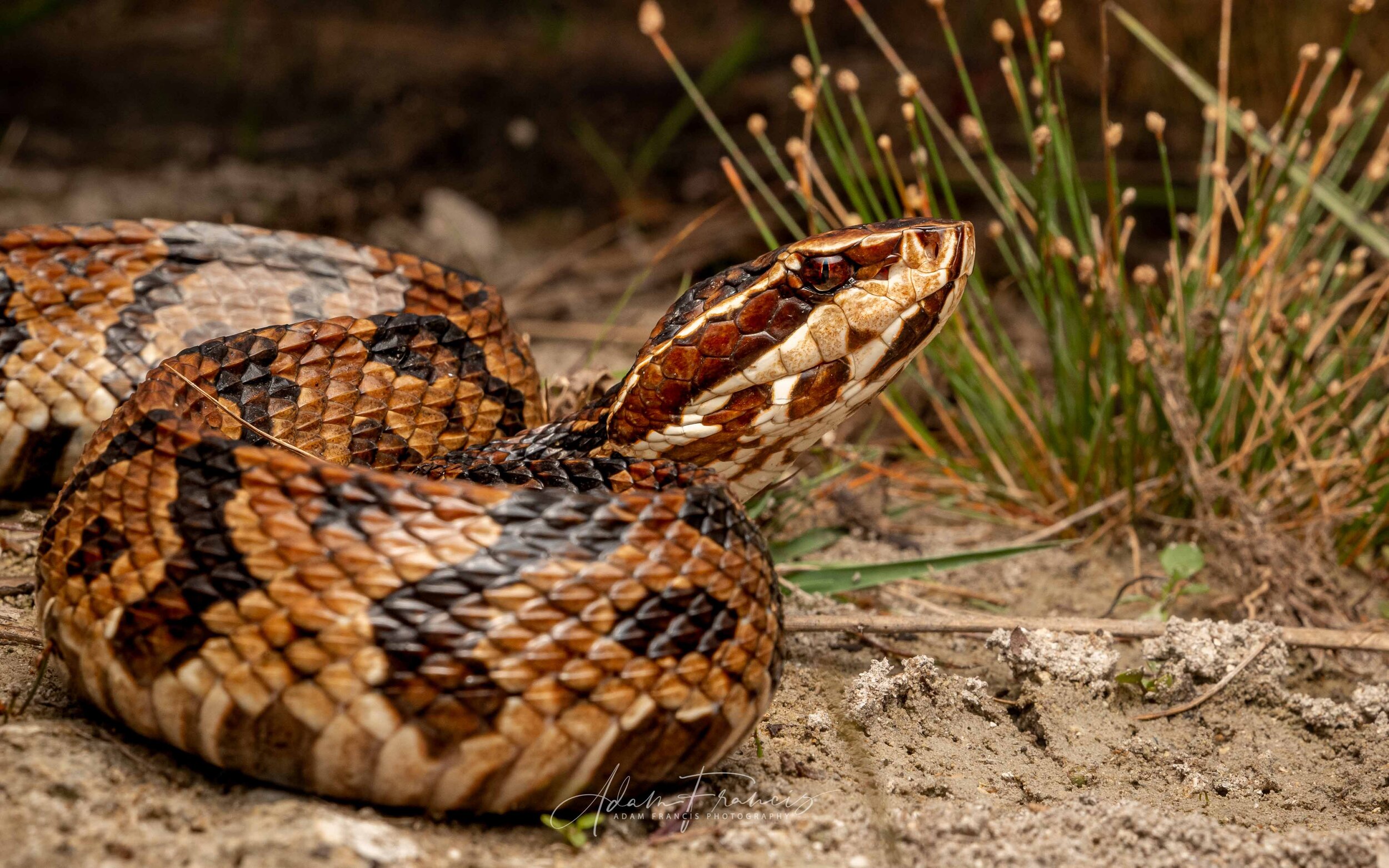
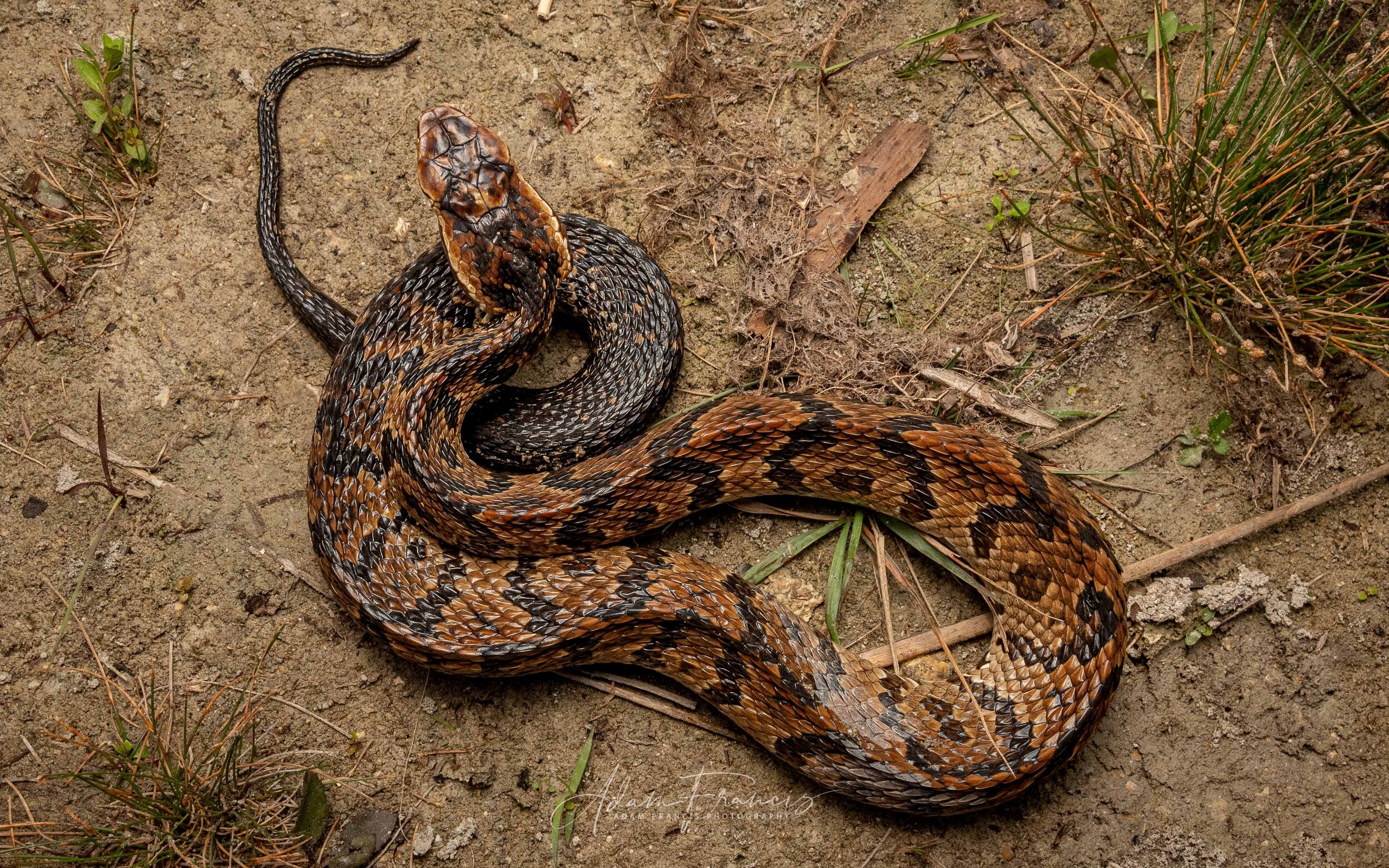
DESCRIPTION
Venomous though generally not considered to be lethal, however fatalities can occur in serious cases. Variable in color and pattern but generally tan to olive green in color with dark brown or black jagged saddles running the length of the body. Head is large and deep set with proportionally sized eyes and dark broad stripes running along each side of the head over the eyes as well as across the lower jaw. Head color is dark on top, similar in color to the body. Tail is dark in color and relatively short. Low and high contrast individuals can be found.
BEHAVIOR
Active day and night, though bleived to be largely diurnal. Cottonmouths are found in and around slow movnign bodies of water and thought to feed largely on acquatic animals like frogs and fish. They have also been documented to eat small mamals, birds and even other snakes when the opportunity arises. They are also well known for defensive displays where they coil up and gap their mouths showing the “cotton” white skin in their mouths with their fangs at the ready. Capable of diving under water, the Cottonmouth is more commonly seen floating at the top while swiming almost exclusitvely and can inflate its body and strike even while floating. Despite teh aggressive defensive behaviors as with most snakes Cottonmouths will most often flee when encountered.
HABITAT
Found at low elevations in and around slow moving bodies of water at warmer latitudes in North America. Cottonmouths will take up residence in mamal burrows and old logs by water sources often laying out in patches of sun to thermal regular and coiling in tall grass or on the banks of ponds and slow moving rivers. Especially common in swamps but also occur in developed areas around rivers and ponds.
MISTAKEN IDENTITY
NO SNAKE SHOULD EVER BE HANDLED BY ANYONE BUT EXPERTS: The Cottonmouth or Water Moccasin can easily be confused with several other species of harmless water snake especially those from the Nerodia genus. Cottonmouths can occur with very low pattern in which case they are almost indistinguishable from various Nerodia to the untrained observer. No brown/black snakes found by bodies of water whould ever be approach or handled as a result and instead observed from a distance.


